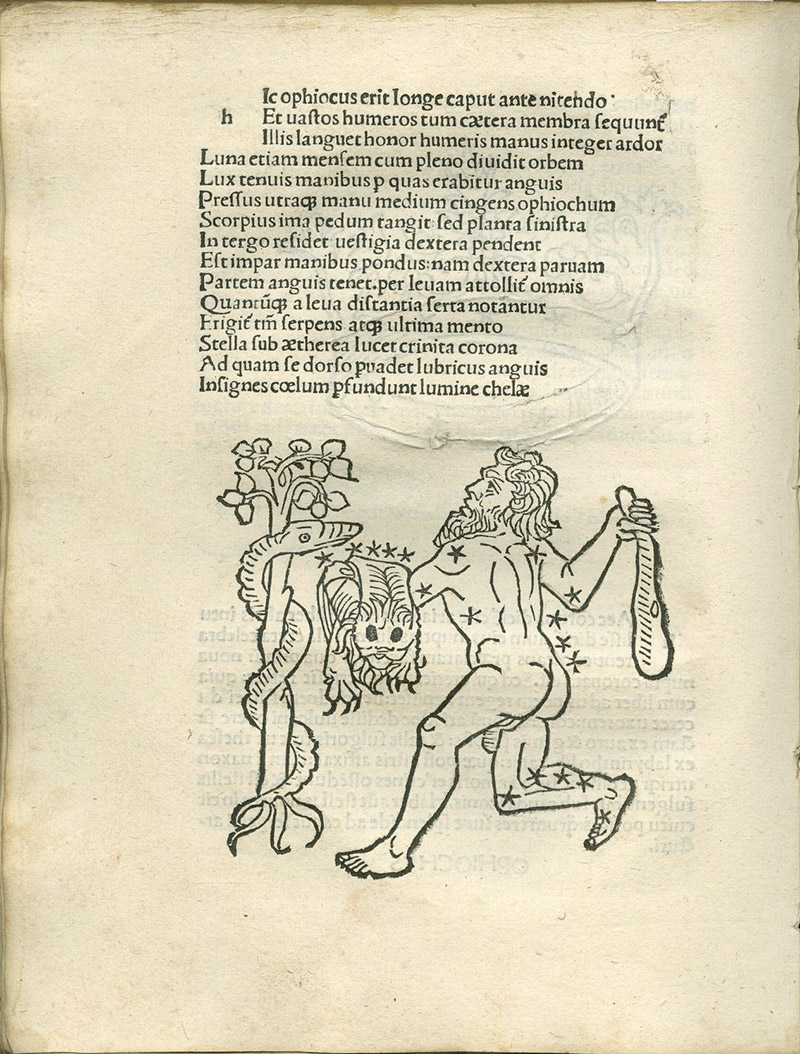Giving an Identity to Constellations

- Germanicus, Aratea: the constellation of the Engonasin or Heracles.
- Rufius Festus Avienus, Arati phaenomena. Ed: Victor Pisanus. Add: Dionysius Periegetes: De situ orbis (Tr: Avienus). Avienus: Ora maritima. Aratus: Phaenomena (Tr: Germanicus, with comm). Aratus: Phaenomena (Tr: Cicero). Quintus Serenus Sammonicus: Carmen medicinale.
- Venice: Antonius de Strata, de Cremona, 25 Oct. 1488.
By adding mythical stories to the constellations described by Aratus and building a mythological narrative around them, Eratosthenes made them livelier and easier to remember. For example, while the Kneeler is an unknown figure in Aratus (Phaen. 64-67: “no one is able to say clearly what it is nor to which task he is hanging, but they call him just the Kneeler; for, this [image] laboring on his knee looks like someone crouching down”) Eratosthenes identifies it with Heracles (Cat. 4). He says that he is slaying the Serpent guarding the apples of the Hesperides, which is identified with the constellation of the Dragon (Cat. 3). Eratosthenes thus constructs a narrative around two constellations that are independent but close to each other in the sky, the Dragon and the Kneeler, which had been anonymous up to that point. By making them part of a very famous mythical cycle, Heracles’ Labors, Eratosthenes gives these constellations an “identity”, so that constellations are not merely faraway celestial phenomena but rather part of the Greek cultural horizon. In fact, his mythical identifications will persist in subsequent star lore. For example, the image here is taken from a 1488 edition of three Latin translations of Aratus, those by Cicero, Germanicus and Avienus. The text displayed here belongs to Germanicus’ translation, entitled Aratea; in this case Germanicus follows Aratus and simply speaks of someone without a name and on the knee (Arat. 66-69). Still, this Renaissance edition curated by Victor Pisanus (d. 1549) adopts the famous identification of Eratosthenes: this is Heracles, as is clear from the lion pelt and the club.